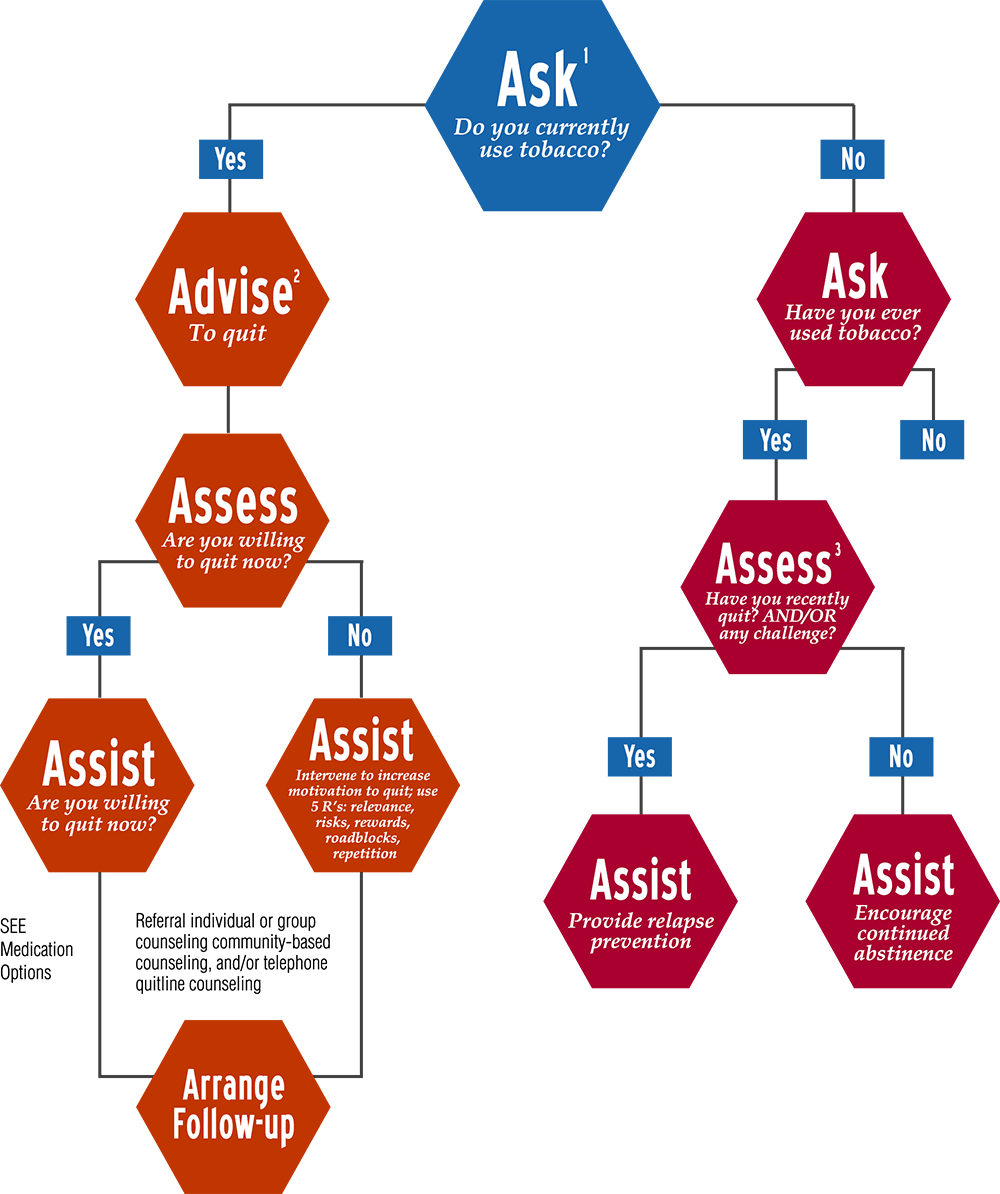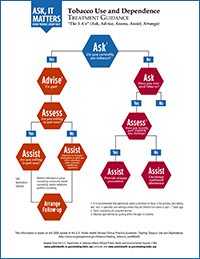Counseling
How to Talk to Your Patients About Quitting Smoking
Tobacco Use and Dependence
Treatment Guidance
“The 5 A’s” (Ask, Advise, Assess, Assist, Arrange)
Supportive counseling consists of ways that you can best encourage, empathize, and engage your patients during their quit attempts.
The following is a guide to asking your patients about tobacco use.

- It is recommended that patients be asked a minimum of 3x/yr in the primary care setting and 1x/yr in specialty care settings unless they are lifetime non-users or quit > 7 years ago.
- Tailor counseling for pregnant women.
- Recently quit defined as quitting within the past 12 months.
This information is based on the 2008 update of the U.S. Public Health Service Clinical Practice Guideline: Treating Tobacco Use and Dependence (http://www.surgeongeneral.gov/tobacco/treating_tobacco_use08/pdf)
Adapted from the U.S. Department of Veterans Affairs Officeof Public Health and Environmental Hazards (13B) vaww.publichealth.va.gov/smoking/index.asp (intranet) and www.publichealth.va.gov/smoking/index.asp
Resources to Guide Your Conversations
Treating Tobacco Dependence in Missouri – web-based training to guide your conversations with patients regarding tobacco use and dependence using the brief intervention method. Training includes specific information regarding the unique needs of patients with behavioral health or substance use disorders and, pregnant women. Free CMEs available upon completion.
Help Your Patients Quit Smoking – A Coaching Guide – Instructions and suggested language to help you effectively counsel patients to stop smoking and using tobacco products.
Help Your Pregnant and Postpartum Patients Quit Smoking – A Coaching Guide – Instructions and suggested language to help you effectively counsel pregnant and postpartum patients to stop smoking and using tobacco products.
Note Pads for Physicians – resource to summarize outcomes of interventions with tobacco using patients
Quit Monday Campaign – resources for hard to reach tobacco using patients

